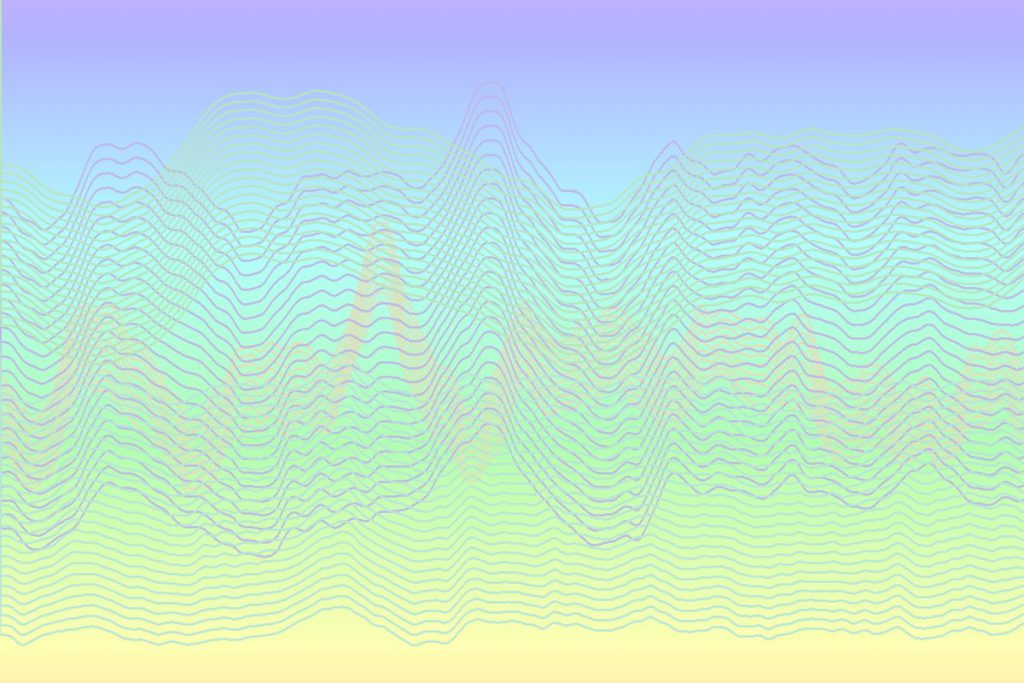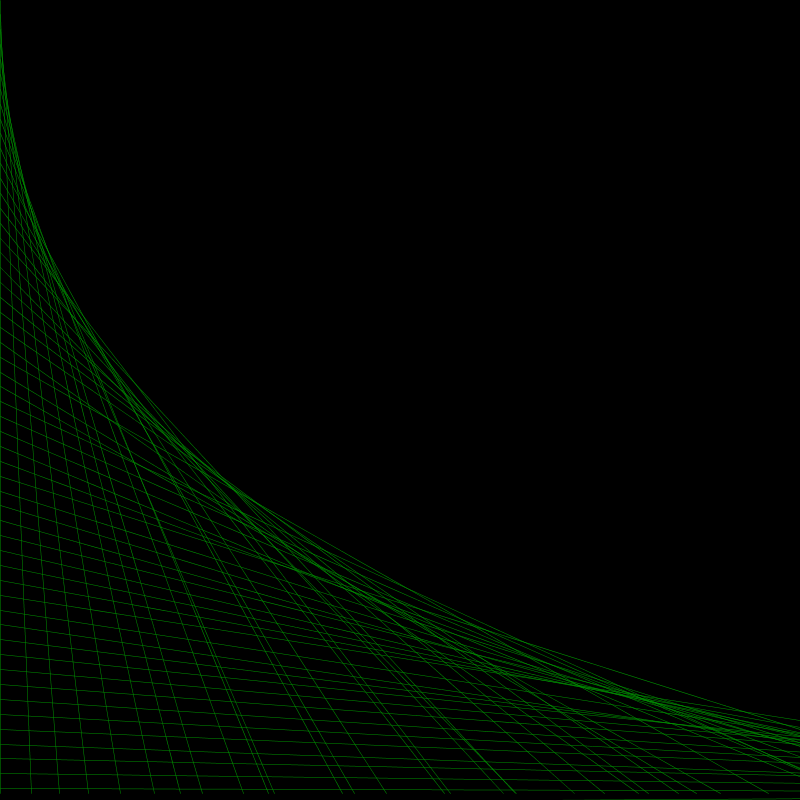
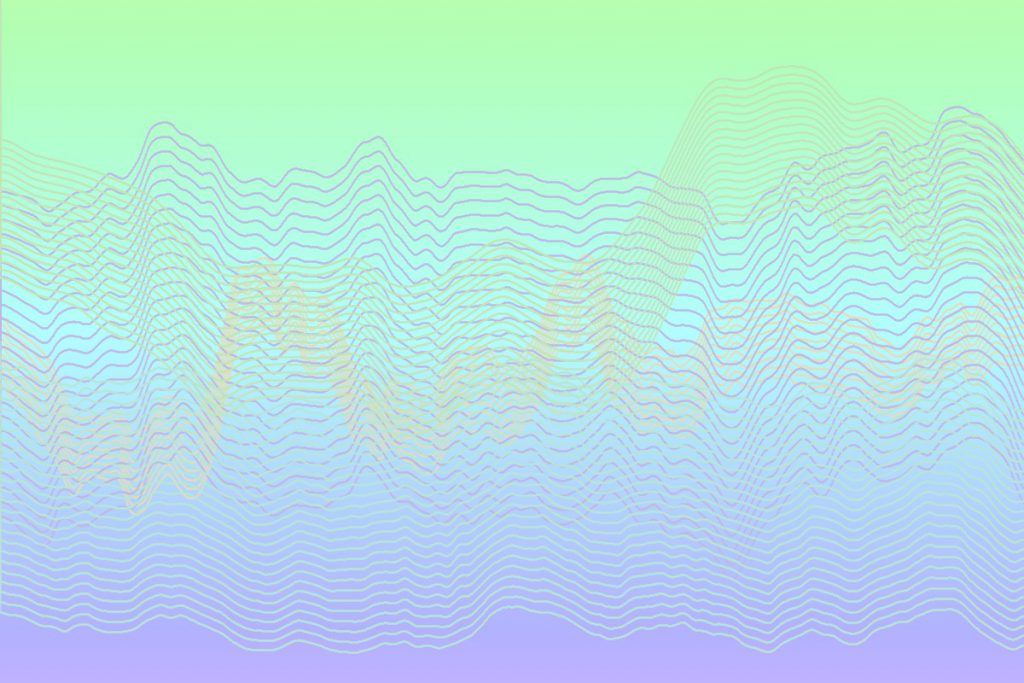
For this studio prompt, I used de Byl’s noise practical lab as a departure point. I took the lab and converted the code into a class, abstracting the color range, distance between lines, width, movement rate, and subtlety of noise. I then created four instances of the new class, each with differing values. The noise of each line presents the initial moment of autonomy for the computer, to decide the movement of each wave. The resulting x position of each wave decides its stroke color, the first relationship between here parts. The second moment of autonomy would be the background. There are two range variables, range1 and range2. The value for each one is derived from when the computer rolls a “dice” every 15 frame counts: for a random number between 4. These two ranges values are then used to determine which two of the four waves’ stroke colors will be used as the range that the gradient in the background creates, thus these are the second and third relationship between parts.
I had a hard time wrapping my mind around noise, though more subtle, it is almost hard to really get a sense of precision nonetheless––I can have a general vague sense of the range of possibility, but not a tangible conception. Thus it was hard to master noise.
As for inspiration, I was first inspired by Peter Burr’s work, who was an artist that I had discovered at my internship; he creates digital animations which border between figural and abstraction in a way that is what I would codify as this current era of aesthetic. His work also tend to incorporate rhythm and chaos and therefore thought it would be fitting to attempt something of that sort. However, fastness was a point of contention between me and my computer. When I had started this, I had this grand idea of using noise in multiple ways, yet it seems perhaps my laptop’s running system was not apt for running multiple noise calculating objects, as the more instances of a class I created the slower it got––ultimately I had to settle for wider spaces (and thus less lines) as well as only four instances. I had hoped to create a somewhat impressionist breathing landscape-esque peace, but unfortunately lost patience attempting to figure out how noise works. I do also realize this also requires a more thorough understanding of how to code with the most efficient and elegant method.
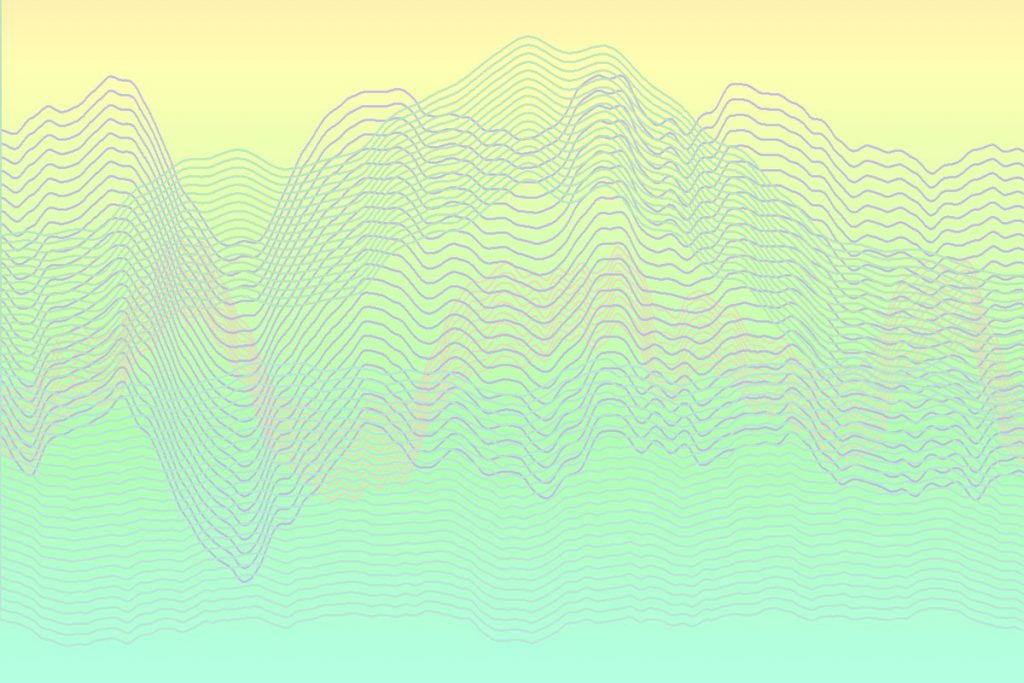
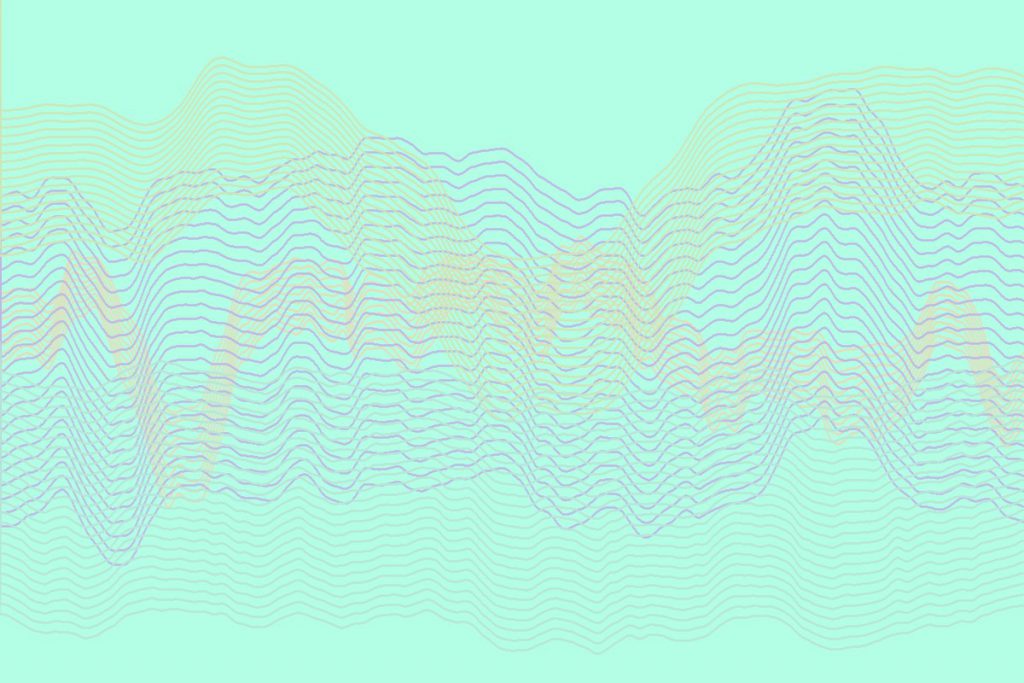
I think the overlapping of lines worked at moments, although I can’t say I am too proud of this piece. It seems to me pretty bland. However, there was a particular moment of discovery in this process that in fact determined the coloring of the piece. Originally, I had a grey background and four colors basic colors (red, blue, green, and yellow). I was playing around with colors, speed, and shape combinations and realized a dynamic, thin green wave reminded me of the snake-like East Asian version of a dragon. I then ultimately riffed off that realization and created a sort of homage to the Vietnamese creation myth: that the Vietnamese people had come from the union of a dragon and fairy. It is in movement and color that I tried to express it, although I am sure it is not something that is quite so clear to everyone else––regardless, I liked its personal, mythological significance for me. Another surprise that kind of interested me is a moment when the two range values are the same, creating a solid background––as the background was to be gradient most of the time the one moment of solid color really stood out to me; for added bonus, one of the lines completely disappeared with the background.
Therefore, if I were to try it again, I would like to work with the disappearing of waves and reappearing of waves, perhaps even at other places. Also if given more time, I would definitely incorporate rotations and scaling––it had just occurred to me now the possibility of it. That would definitely allow for more of a dynamic interplay between the four waves I’m sure, although I do not have quite a tangible sense of how I would even incorporate rotation. Spirals perhaps?
